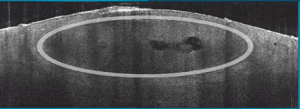The fight against cancer continues. Biomedical engineers have announced a new skin cancer diagnosis tool that will identify cancers in up to 30 seconds.
Presently, a dermatologist needs to remove potentially malignant skin from a patient and send it away for testing to assess whether or not the skin is cancerous. This can cause unnecessary scarring for some and dangerous delays for others. The key to stopping cancer in its tracks is quick diagnosis.

Non-melanoma skin cancer is the most common form of cancer we know today. The EU-funded group, the Automatic Detection of Vascular Networks for Cancer Evaluations (ADVANCE) has now made the process of identifying skin irregularities which pose potential health risks more efficient.
Now, with infrared laser technology, the new ‘Vivosight’ enables a specialist to see further into the skin than ever before. The technology employs advanced optical coherence tomography technology, similar to that found in retina scanning machinery.
The technology allows the experts to peer 1mm underneath the skin and create a 3D color image of microscopic blood vessels. It is the first time dermatologists have been able to see such a detailed picture of what blood and tissue are doing, in real time, with a handheld scanner.

Image: The Vivosight spotting skin cancer
Source: Vivosight
The technology is already being used in Europe and the United States of America.
Jon Holmes of Michelson Diagnostics, a partner of ADVANCE, speaking to Sci-News, lamented over the slow process of diagnosis that still exists today. He said:
“There has to be a better way: our scanner may radically improve the abilities of dermatologists to decide whether a melanoma is in the less malignant, non-spreading, early stage, or if it has already developed and requires immediate aggressive therapy. Further clinical trials will be needed to conclusively prove the technology.”
Because the scanner enables the viewing of blood vessel networks it may also assist with other diagnoses as well. Holmes says treatment of leg and foot ulcers could be a useful benefit that the technology’s capabilities provide; it would certainly determine how quickly or slowly a wound is healing.
With these kinds of advancements in biomedical engineering, increased investment and growth in the industry is a certainty. An increasing population demanding good health will drive efficiency of diagnosis and other beneficial medical tools which must be designed and manufactured by the biomedical engineering industry.
Works Cited
“Dynamic OCT: Introducing the VivoSight DX.” YouTube, YouTube, 15 May 2017, www.youtube.com/watch?v=s4sWYF_4txE.
Knight, Helen. “OCT Laser Scanner Detects Cancer in under 30 Seconds.” The Engineer, 31 Oct. 2017, www.theengineer.co.uk/laser-scanner-cancer-oct/.
